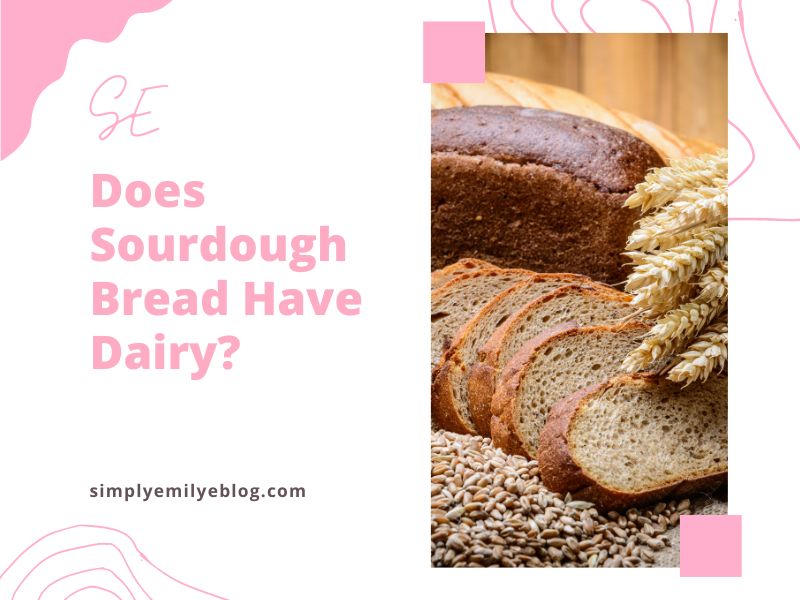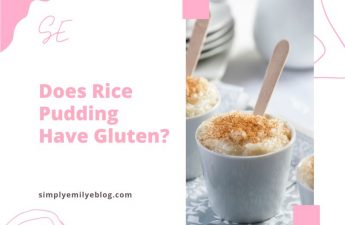If you’ve ever stopped to wonder whether sourdough bread has dairy, you’re not alone. With so many dietary restrictions and allergies in the world, being able to choose the right ingredients when it comes to baked goods is more important than ever.
Basically, your answer is no – most sourdough bread is dairy free! After all, the classic sourdough starter is either flour and water, or flour, water, and salt. The fermentation process is then carried out by wild yeast and lactic acid-producing bacteria, which acts as a leavening agent and gives sourdough its distinctive tangy flavor. This also makes sourdough more easily digestible than other types of bread. There are no dairy products involved in this process – not even milk!
However, not all sourdough recipes are created equal! If you’re baking your own loaf at home, it’s important to check the recipe’s ingredients list to make sure that there’s no dairy present. Some breads might be enriched with milk powder, or even butter, so it’s important to double-check.
Likewise, if you’re buying your sourdough from a shop, it’s best to ask an assistant if there are any dairy products involved in the recipe. Oftentimes, bakers will use butter in the bread’s toppings or glaze – something you’ll want to steer clear of if you’re avoiding dairy altogether.
After all, classic sourdough bread is usually perfectly safe for those who are lactose intolerant or following a strict vegan diet. Of course, make sure that you always double-check the ingredients list and if you’re ever in doubt, just ask the seller. With some extra fact-checking, you can safely enjoy the delicious tangy taste of sourdough without having to worry about offending any allergies!
Is Sourdough Bread gluten free?
The confusion around the ingredients that make up different kinds of bread has long been a source of debate. Sourdough bread has had its turn in the spotlight, too, with some people wondering whether it’s gluten free or not. Let’s take a look at the science and see if other types of bread can be called gluten free.
Gluten is a type of protein found in certain grains like wheat, rye, and barley. This protein is what gives some types of bread their shape and chewiness, and it’s responsible for the delicious taste and texture that many of us associate with it. Unfortunately, gluten can also cause a lot of health issues for people with celiac disease or gluten sensitivity.
Since sourdough bread is made from wheat flour, it naturally contains gluten. So if you have celiac disease or gluten sensitivity, it’s important to steer clear of it. However, some types of sourdough bread can be made without wheat flour. These breads are made with alternative flours like sorghum or brown rice flour, which are naturally gluten free.
The problem is that many commercial bakeries don’t always label their bread correctly. That means that you might think you’re buying a gluten-free sourdough bread, only to find out that it has some wheat flour in it. That’s why it’s important to be aware of the ingredients and to look for specially labeled gluten-free sourdough bread.
Some people might argue that the fermentation process used to make sourdough can reduce the amount of gluten in the bread. This is referred to as “reduction,” and it means that the gluten in the dough is broken down slightly by the natural bacteria. While this can make some sourdough products more digestible for those with celiac disease, it doesn’t make them gluten free.
To sum it up, sourdough bread is not gluten free. But there are still lots of delicious, gluten free bread to enjoy. Look for specially labeled breads that use alternative gluten-free flours, and don’t hesitate to explore other types of gluten-free baking for delicious and nutritious options.
What is Sourdough Bread?
Sourdough bread is an ancient bread-making technique, believed to have been used since Biblical times. It is created by mixing flour and water and allowing them to ferment to create a wild yeast starter. This starter can then be used to leaven dough, creating a bread that has a unique flavor and texture.
The main characteristic of sourdough bread is its tangy, slightly sour taste. This is caused by a combination of lactic acid bacteria and wild yeast, which break down carbohydrates in the flour and create acidic compounds, resulting in that signature flavor. The flavor is created over time, with the bread taking longer to rise than bread made with cultivated yeast. The lactic acid bacteria and wild yeast also lend the bread a slightly chewy texture and a golden to dark brown crust.
The sourdough bread-making process can take up to two days, with the starter being created on the first day and added to the dough on the second. To create a starter, a mixture of flour and water is left to ferment, allowing the wild yeast and bacteria to naturally form. This starter can then be used in bread-making, rising over time with the help of the wild yeast to give the bread its airy texture.
The process of sourdough bread-making is not only interesting but also incredibly healthy. The naturally-produced enzymes and lactic acid bacteria work to break down carbohydrates, making the bread easier to digest. This also means that bread made with sourdough can be a healthier option than bread leavened with cultivated yeast, as well as being more flavorful. Sourdough can also help to make gluten more digestible, reducing irritation in those who are gluten-sensitive.
The popularity of sourdough bread has grown in recent years as a result of its distinct taste and health benefits. From artisanal bakeries to expensive sushi stores, sourdough is now widely available. For those looking to enjoy sourdough bread at home, online baking classes and cookbooks offer recipes and advice on how to create the perfect bread.




